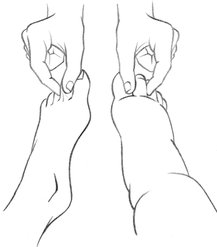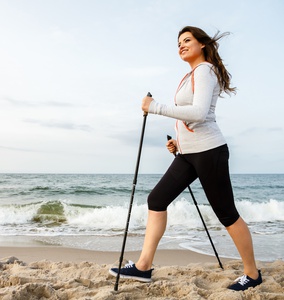Lipedema or Lymphedema?
The difference between Lipedema and Lymphedema.
There are a few indicators that help differentiate lipedema from lymphedema successfully. In this article, we will give you a little help on how to diagnose the symptoms of both conditions. However, these specifications can, by no means, replace a medical examination. When suffering symptoms or pain for a long time, we strongly advise seeking medical help.
Lipedema
The term ‘lipedema’ describes a chronic and painful maldistribution of fat alongside water retention. The disease predominantly affects the hips and thighs. The rest of the body usually remain unaffected.
Causes and consequences of Lipedema
Lymphedema
If too much liquid is retained in the tissue, unwanted swellings can develop. This can be a sign of ‘lymphedema’. Lymphedema can be caused by inflammation (due to insect bites or sprains, for example), which can temporarily overburden the lymphatic system, leading to what is referred to as acute lipedema. If the inflammation subsides, the tissue swelling also decreases.
If the swelling remains, however, this can be due to a chronic issue, i.e., permanent malfunctioning of the lymphatic system. This is called ‘secondary lymphedema’.
Causes and consequences of Lymphedema


How do the symptoms of the two conditions differ?
In the following summary, you’ll discover the symptoms typical of both diseases.
| Lipedema | Lymphedema | |
|---|---|---|
| Symmetry | The increase of fatty tissue is symmetrical. For example, the circumference of both legs is similar. | The swelling is asymmetrical. For example, only one leg is swollen. |
| Pressure pain | Touching the affected area or applying any pressure is painful. | Those affected do not experience pain when touched or when pressure is applied. |
| Stemmer’s sign | Stemmer’s sign is negative: A fold of skin can be lifted above the back of the toe or finger. | Stemmer’s sign is positive: No fold of skin can be lifted above the back of the toe or finger. |
| Edema on the back of the foot/hand | Feet and hands are free of edemas: Edema reaches up to the ankles and/or wrists. | Hands and/or feet are also affected: The swelling reaches up to the toes and/or fingertips. |
| Thumbs test | The thumbs test is negative: If you press a thumb into the swelling, it doesn’t leave an imprint. | The thumbs test is positive: If you press a thumb into the swelling, the indentation stays for a while. |
| Cellulite | Uneven ‘orange skin’ with smaller dips initially and larger ones later on. | The skin is firm and tense due to water retention. |
| Susceptibility to haematoma | Blue marks appear quickly and frequently. | Blue marks appear. |
| Inflammation | Inflammation and skin irritation are rare. | The skin is susceptible to inflammation and even erysipelas. |
Hybrids
Edemas can also occur in connection with other types of clinical pictures and can, therefore, manifest themselves differently to the pure form of lipedema and lymphedema. Many patients who are diagnosed late often suffer from a hybrid type of lipedema and lymphedema – lipo-lymphedema. It can develop when lipedema remains untreated for too long and thus affects the lymph transport.
Early recognition and swift reaction
When suffering from edemas, it’s important to start treatment as soon as possible. That’s why we recommend that you contact a medical specialist if you suspect you might have lipedema or lymphedema. Treatment outcomes can be very successful if started early.






